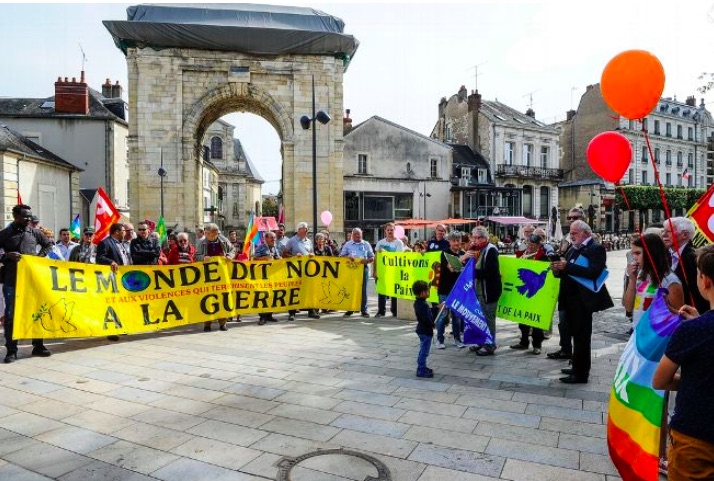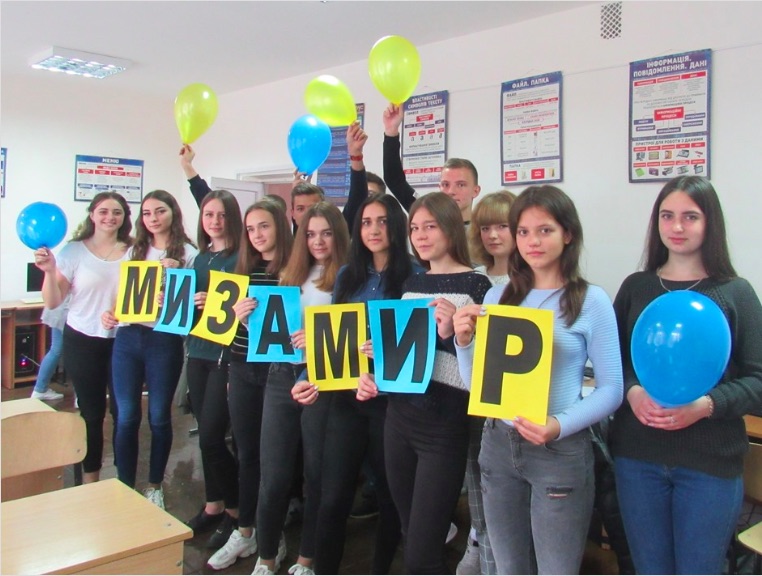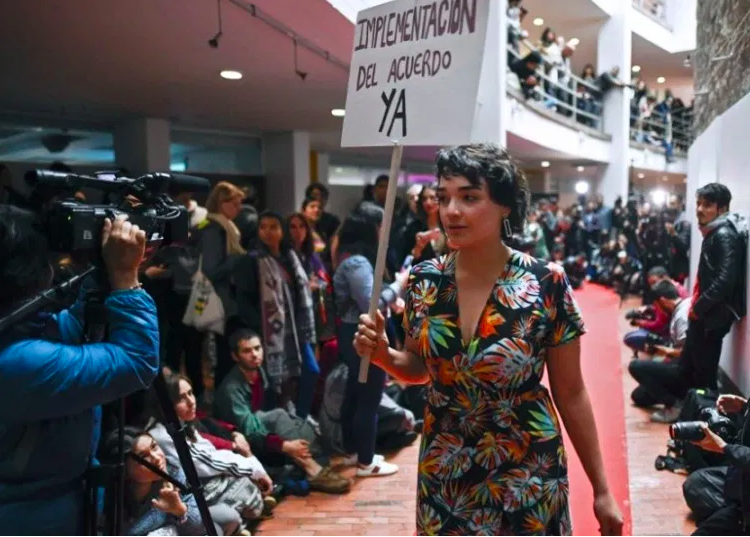In our survey this year we found 655 actions for the International Day of Peace that took place throughout the world. It is more or less the same number as last year, although we counted them in a different way this year.
The theme this year, decided by the United Nations, was climate action for peace. In this way the theme of peace was linked to the enormous mobilizations against climate change that took place this month throughout the world.
The greatest number of actions for the International Day of Peace, 280, took place in the United States and Canada, thanks to the remarkable mobilization by Campaign Nonviolence. To quote from their website:, “For three decades, Pace e Bene has been leading nonviolence trainings, publishing books on nonviolence, and taking action for nonviolent change. In the spirit of St. Francis, Gandhi, Dorothy Day and Dr. Martin Luther King, Jr., we have persistently invited people everywhere to walk the path of nonviolence. Now Campaign Nonviolence is taking this work further . . the annual Campaign Nonviolence National Week of Action, where every September we mobilize across the country and around the world for a culture of peace, economic equality, racial justice and environmental healing.”
There was also a very broad mobilization this year in France, thanks to the efforts of Mouvement de la Paix which was responsible for half of the 144 actions in Europe. To quote from their website, as translated by CPNN, “The Mouvement de la Paix acts for the disarmament, in particular nuclear, but also against the production and the transfers of armaments, for the reduction of the military budgets. Made up of close to 150 committees spread all over France and forming links with international peace organizations, the Mouvement de la Paix intends to propose initiatives around the 8 constituent points of the international decade (UN – UNESCO) of the promotion of a culture of peace and non-violence:
1. Strengthening a culture of peace through education,
2. Promoting sustainable economic and social development,
3. Promoting respect for all human rights,
4. Measures to ensure equality between women and men,
5. Measures to promote participation in democratic life,
6. Measures to develop understanding, tolerance and solidarity,
7. Measures to support participatory communication and the free flow of information and knowledge,
8. Measures to promote international peace and security.”
In the rest of the world, unlike North America and Europe, people are suffering from wars and armed conflicts, and that is where we find the most remarkable mobilizations for the International Day of Peace.
In Latin America, there were actions in Colombia in order to strengthen the peace agreement that put an end to decades of war and suffering. Especially remarkable was the fashion show in Bogota by former FARC guerillas who have turned from the gun to the sewing machine and who paraded on the catwalk with placards calling for implementation of the peace agreement.In Medellin it was a local bar that took the lead for for workshops and sporting events to support the agreement. In Tumaco it was a theatrical play and in Valleduopar a photo exhibition.
In the Ex-Soviet countries, the majority of the 54 actions took place across the two sides of the armed coflict in the Ukraine. There were poignant cries from both sides by mothers and children calling for an end to the violence and separation. Let us hope that their cries are heard and lead to peace!. In the East at Rovenka, “To the sound of the “Bells of Peace” the children stood in a circle and joined hands. . . Together, they made a wish that the war would end in the Donbass.” “In Avdeevka, which has repeatedly come under fire, where they still hear gunshots and heal wounds (there are still a lot of houses destroyed and damaged by shelling), there is a special relationship to World Peace Day. It was expressed yesterday by students of school No. 7. . . who made paper doves, wrote what they would do for peace and and also arranged a dance flash mob on the street.” In the West in Kvasilovsky, “All those present had tears in their eyes as they watched the children . . . reach out to us adults: “I want peace! I don’t want to hear the word “war”! “..
In Africa 9 of the 53 actions took place in the Democratic Republic of the Congo which continues to suffer from decades of local wars. In Beni “While peace is celebrated in other countries of the world, here we celebrate assassinations, massacres, looting.” In Kananga “Since we are in the citizen movement fighting for change during or after the atrocities of kamwina nsapu we never stop to launch the message of peace, carry out awareness campaigns, participate in various broadcasts of radio stations to call the people who had the weapons in their hands to lay them down and make peace.” And in Sud Kivu “The International Day of Peace is celebrated while a climate of insecurity is maintained by the presence of armed groups that sow terror and desolation in South Kivu and throughout the eastern part of the DRC.”
As for the Arab states and the Middle East, in the face of a terrible ongoing war in their country, the International Day of Peace was celebrated in three cities of Yemen: Aden, Hadramaout and Taiz. In the latter young art students produced drawings with “writings expressing peace, coexistence, brotherhood, tolerance, expressions calling for dialogue and tolerance among all sects, parties and groups, giving priority to the interest of the nation, renouncing sectarianism and violence, and calling on all to work together for lasting peace . . .to deliver a message that Taiz, despite its siege and war, is still a city that loves life, art and beauty and is still a city of love, coexistence and peace.” Other actions were carried out to celebrate the recent peace accords in Sudan and to consolidate peace in Syria.
In Asia and the Pacific, the Day was not dedicated to the resolution of conlicts and tensions such as those in Afghanistan, Kashmir, Myanmar and Korea, but in China the massacre of Nanjing, which took place durig the Japanese invasion of 1937 continues to be commemorated, this year by a concert of peace songs by the choir “Zi Jincao.”
To conclude, we have emphasized here the aspects of the International Day of Peace that contribute to the consciousness needed for an eventual transition from the culture of war to a culture of peace.
|
GLOBAL |
UNITED STATES AND CANADA |
ASIA AND PACIFIC |
|
|
EX-SOVIET COUNTRIES |
ARAB STATES AND MIDDLE EAST |
LATIN AMERICA & CARIBBEAN |







